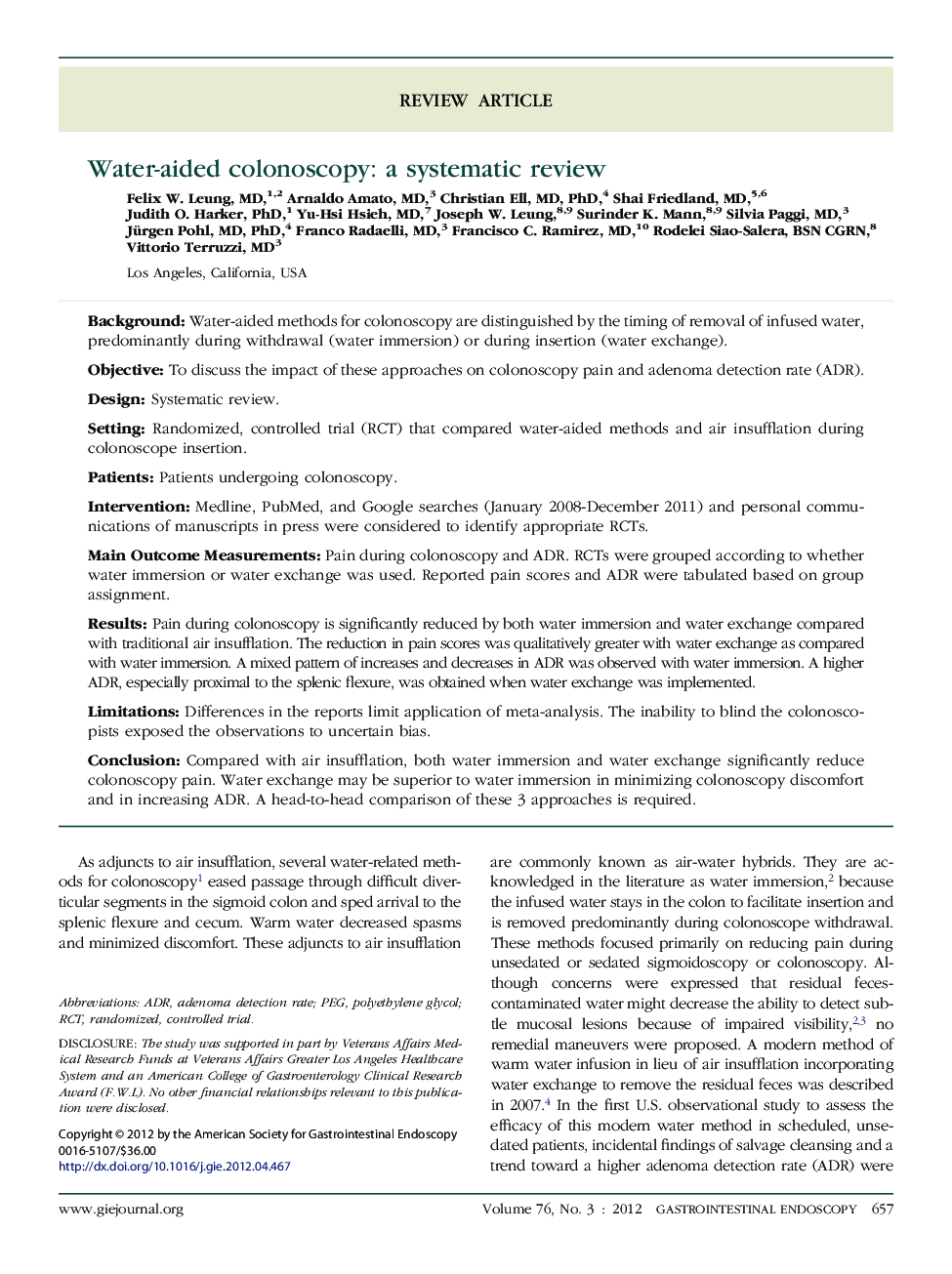| Article ID | Journal | Published Year | Pages | File Type |
|---|---|---|---|---|
| 3303699 | Gastrointestinal Endoscopy | 2012 | 10 Pages |
BackgroundWater-aided methods for colonoscopy are distinguished by the timing of removal of infused water, predominantly during withdrawal (water immersion) or during insertion (water exchange).ObjectiveTo discuss the impact of these approaches on colonoscopy pain and adenoma detection rate (ADR).DesignSystematic review.SettingRandomized, controlled trial (RCT) that compared water-aided methods and air insufflation during colonoscope insertion.PatientsPatients undergoing colonoscopy.InterventionMedline, PubMed, and Google searches (January 2008-December 2011) and personal communications of manuscripts in press were considered to identify appropriate RCTs.Main Outcome MeasurementsPain during colonoscopy and ADR. RCTs were grouped according to whether water immersion or water exchange was used. Reported pain scores and ADR were tabulated based on group assignment.ResultsPain during colonoscopy is significantly reduced by both water immersion and water exchange compared with traditional air insufflation. The reduction in pain scores was qualitatively greater with water exchange as compared with water immersion. A mixed pattern of increases and decreases in ADR was observed with water immersion. A higher ADR, especially proximal to the splenic flexure, was obtained when water exchange was implemented.LimitationsDifferences in the reports limit application of meta-analysis. The inability to blind the colonoscopists exposed the observations to uncertain bias.ConclusionCompared with air insufflation, both water immersion and water exchange significantly reduce colonoscopy pain. Water exchange may be superior to water immersion in minimizing colonoscopy discomfort and in increasing ADR. A head-to-head comparison of these 3 approaches is required.
